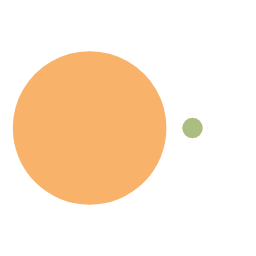结构体和链表
一、 结构体(struct)
结构体(Structure)是C语言中一种用户自定义的数据类型,它允许将不同类型的数据组合在一起。结构体可以看作是一个数据的集合,其中每个数据项称为成员(member)。
(一) 声明结构体变量
1. 先定义,后声明
1
2
3
4
5
6
7
8
9
10
11
12
13
14
15
16
17
18
19
20
21
22
23
| struct student {
char name[20];
int age;
char address[50];
};
#include<stdio.h>
int main(){
struct student stu1;
struct student stu2.stu3;
printf("请输入姓名、年龄、地址:");
printf("请输入姓名、年龄、地址:");
scanf("%s %d %c %s",stu1.name,&stu1.age,stu1.address);
printf("姓名:%s\n年龄:%d\n地址:%s\n",
stu1.name,stu1.age,stu1.address);
return 0;
}
|
2. 定义结构体的同时声明变量
1
2
3
4
5
6
7
8
9
10
11
12
13
14
15
16
17
18
19
| #include<stdio.h>
struct Person {
char name[50];
int age;
float height;
} person1;
struct student {
char name[50];
int age;
float height;
} stu1,stu2,stu3;
int main(){
printf("请输入姓名、年龄、身高:");
scanf("%s %d %f",person1.name,&person1.age,&person1.height);
printf("姓名:%s\n年龄:%d\n身高:%.2f\n",
person1.name,person1.age,person1.height);
return 0;
}
|
3. 定义匿名结构体的同时声明变量
这种语法不常用,了解即可
1
2
3
4
| struct {
int x;
int y;
} a1,a2;
|
(二) 初始化结构体变量
1. 声明的同时初始化
1
2
3
4
5
6
7
8
9
10
11
12
13
14
15
16
17
18
19
| #include<stdio.h>
struct student {
char name[20];
int age;
char address[50];
int score;
};
int main(){
struct student stu1 = {"张三",18,"北京",98};
struct student stu2 = {.age=19,.name="李四",.address="上海"};
printf("姓名:%s\n年龄:%d\n地址:%s\n成绩:%d\n",
stu1.name,stu1.age,stu1.address,stu1.score);
printf("姓名:%s\n年龄:%d\n地址:%s\n成绩:%d\n",
stu2.name,stu2.age,stu2.address,stu2.score);
return 0;
}
|
2. 先声明的后初始化
1
2
3
4
5
6
7
8
9
10
11
12
13
14
15
16
17
18
19
20
21
22
23
24
25
| #include<stdio.h>
struct student {
char name[20];
int age;
char address[50];
int score;
};
int main(){
struct student stu1,stu2;
stu1.name = "张三";
stu1.age = 18;
stu1.address = "北京";
stu1.score = 98;
stu2.name = "李四";
stu2.age = 19;
stu2.address = "上海";
stu2.score = 100;
printf("姓名:%s\n年龄:%d\n地址:%s\n成绩:%d\n",
stu1.name,stu1.age,stu1.address,stu1.score);
printf("姓名:%s\n年龄:%d\n地址:%s\n成绩:%d\n",
stu2.name,stu2.age,stu2.address,stu2.score);
return 0;
}
|
(三) 访问结构体成员
刚刚的例子已经展示过,我们使用点运算符(.)来访问结构体变量的成员(如使用stu1.name来访问stu1的name成员)
(四) 嵌套结构体
结构体可以嵌套,即结构体的成员也可以是另一个结构体。
1
2
3
4
5
6
7
8
9
10
11
12
13
14
15
16
17
18
19
20
21
22
23
24
25
26
27
28
29
30
31
32
33
34
35
36
37
38
39
40
41
| #include <stdio.h>
#include <string.h>
struct Date {
int day;
int month;
int year;
};
struct Person {
char name[50];
int age;
float height;
struct Date birthdate;
};
int main() {
struct Person person1;
strcpy(person1.name, "Bob");
person1.age = 25;
person1.height = 5.9;
person1.birthdate.day = 15;
person1.birthdate.month = 8;
person1.birthdate.year = 1998;
printf("Name: %s\n", person1.name);
printf("Age: %d\n", person1.age);
printf("Height: %.2f\n", person1.height);
printf("Birthdate: %02d/%02d/%d\n",
person1.birthdate.day, person1.birthdate.month, person1.birthdate.year);
return 0;
}
|
(五) typedef
typedef是c语言中的一种关键字,作用是为现有数据类型或我们定义的结构体和指针添加别名,从而方便我们使用。
每次声明一个结构体变量都需要 struct 结构体名称 变量名;有点麻烦
我们可以用typedef来简化
1
2
3
4
5
6
7
8
9
10
11
12
13
14
15
16
17
18
19
20
21
22
23
24
25
26
27
28
29
| #include<stdio.h>
typedef struct student {
char name[20];
int score;
char address[50];
} Student;
int main(){
Student stu1,stu2;
stu1.name="张三";
stu1.score=98;
stu1.address="北京";
stu2.name="李四";
stu2.score=100;
stu2.address="上海";
printf("姓名:%s\n成绩:%d\n地址:%s\n",
stu1.name,stu1.score,stu1.address);
printf("姓名:%s\n成绩:%d\n地址:%s\n",
stu2.name,stu2.score,stu2.address);
return 0;
}
|
要注意typedef并不是创建了一个新的数据类型,而是给现有类型添加了一个别名。
用typedef创建别名时,可以省略该结构体的标签
1
2
3
4
5
6
7
8
9
10
11
12
13
| typedef struct student {
char name[20];
int score;
char address[50];
} Student;
typedef struct {
char name[20];
int score;
char address[50];
} Student;
|
(六) 结构体数组
先前我们讲过,一维数组就像一排小格子,每个格子里面都放了一个元素,这个元素可以是任意数据类型的变量。
我们我们也可以把结构体当成一个元素来存放在数组中。
1. 先声明,后初始化
1
2
3
4
5
6
7
8
9
10
11
12
13
14
15
16
17
18
19
20
21
22
23
24
25
26
27
| #include<stdio.h>
#include<string.h>
typedef struct student {
char name[20];
int score;
char address[50];
} Student;
int main(){
Student stu[2];
stu[1].score = 18;
stu[1].name = "张三";
strcpy(stu[1].name, "张三");
printf("%s %d\n",stu[1].name,stu[1].score);
return 0;
}
|
2. 声明的同时初始化
1
2
3
4
5
6
7
8
9
10
11
12
13
14
15
16
17
18
19
20
| #include<stdio.h>
typedef struct{
int day;
int month;
int year;
} myDate;
int main(){
myDate dates[] = {
{15,8,1998},
{23,7,2024},
{12,12,2023},
{1,1,2023}
};
for(int i = 0; i < 4; i++){
printf("Time is %.2i:%.2i:%.2i\n",
dates[i].year,dates[i].month,dates[i].day);
}
return 0;
}
|
(七) 结构体指针
我们可以创建指向整型、浮点型、数组等的指针,同样,我们也可以创建一个指向结构体的指针
1
2
3
4
5
6
7
8
9
10
11
12
13
14
15
16
17
18
19
20
21
22
| #include<stdio.h>
typedef struct{
int day;
int month;
int year;
} myDate;
int main(){
myDate myday1;
myDate *p = &myday1;
(*p).month = 8;
p->month = 11;
scanf("%d",&p->year);
printf("%d/%d/%d\n",p->day,p->month,p->year);
return 0;
}
|
(八) 结构体与函数
结构体可以作为函数的参数,也可以作为函数的返回值。
当我们把数组当参数传入函数的时候,实际上传入了一个地址,我们在那个函数中可以通过传入的地址来修改数组中的元素
、
但是结构体不同,当我们把结构体当参数传入函数的时候,实际上传入的是一个结构体变量的拷贝,也就是我们把要传入的结构体复制了的一份副本传给函数,所以在函数中修改这个副本并不能对外部结构体变量产生影响。当这个函数执行完毕,这个副本的生命周期也就结束了。
所以我们可以选择传入一个指向结构体的指针作为参数,这样我们就可以修改外部结构体变量了。
